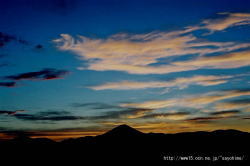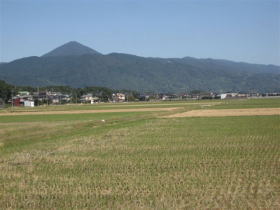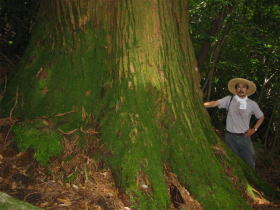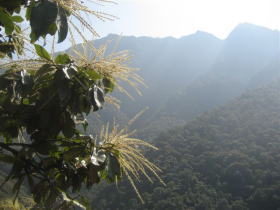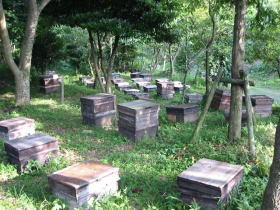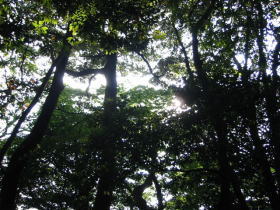|
|||||||||||||
Yasutaka Yoshimori ―A silent and eloquent man in the woods― |
|||||||||||||
Hello, friends. I am very pleased to introduce you one of my friends, who is very silent, and at the same time very eloquent. He is silent among people. He is eloquent in the woods. He reminds me of Henry David Thoreau and his book "WALDEN, OR LIFE IN THE WOODS". I hope you will enjoy meeting Yasutaka Yoshimori. |
|||||||||||||
For people who live in Karatsu, Ukidake is a familiar mountain. Viewed from Nanayama, or from Nijyo Town, it changes its shape interestingly. Like a huge tree stock, or a bosom, or else....
People admire the mountain from distance, but probably not many have climbed up to the summit. The whole mountain is thickly covered with the trees, and to command a wide view of the Genkai Sea does not come up to your expectation. If you hear this, you might not be induced to bother yourself to climb it. On the summit of this over 800 meters high mountain, there is a small shrine, and in old days, pious people came here from Nanayama and Fukuyoshi, which is just the other side of the mountain, to do Sumo matches to treat the God. This mountain was originally a sacred place where Shugendo* is practiced. In other words, it can be said that this is a mountain where all kinds of spirits live.
Broad-leaved evergreen trees are literally evergreen throughout the year, with their thick leaves shining in the sun up above. Therefore, the inside of the forest is dim and humid, and trees are entwined with vines of wisteria or other creepers. Mushrooms and slime mould stick to decayed trees, and as a result, this forest becomes a best place for spirits to live in. You will know it immediately if you leave the mountain trail and step into the forest which is dark even in daytime.
The belt of this high productive broad-leaved evergreen forests extends from Nepal via east Asia to the 'navel' of Japan, feeding the Jomon period habitants with acorns of oaks and pasanias. The productivity of this belt is more heightened with the abundant yam, lily and kudzu which have starchy roots.
What I mean is probably this: how much important are the untouched forests! After the war, government policies were formulated to make every Japanese mountain into cedar or cypress forests. It turned out to be a foolish idea. Diversity was ignored, and the regional originality was trampled. Vegetation was centralized. The trees of an area are chosen by various factors like climate, topographical features, etc., in a long span of time. Consequently, insects, birds, animals were chosen, qualified and adjusted. Needless to say, the spirits must have been happy there.
They do not know how to fight against the enemies, and either do not have enough resistance to the local diseases. Native bees have survived some tens of million years here, and they lightly live out in the circumstances of this land. I was stupid not to notice this idea of the extreme forest until I started to plant trees myself. I aimed at a bee forest, and tried to plant every kind of trees randomly including foreign species, and after some ten years I found that the natural seedlings like Japanese oak, beech, and Tabu (Machilus Thunbergii) grow vigorously without being affected by diseases. Thinking it over, I knew that the good example of making a forest was at my feet.
The shape of Ukidake seen from Karatsu might have been created into this extreme pyramidal figure by the nature since time immemorial. This idea makes me adore the mountain even more. The headwaters flow into the Tamashima River, and made up this tideland "Matsuragata". And I can proudly say that this is also an extreme scenery. Invitation to Yasutaka's forest. Click here. |
|||||||||||||
|
Well, did you understand why I said Yasutaka is eloquent? Probably today too he is in the woods talking and listening to the bees and trees, making a good cup of coffee for himself, sparing some time for sitting and reading poetry. If H.D. Thoreau were here, these two men would make best friends. Thank you for meeting Yasutaka. Yasutaka and I will be happy if you send us a letter from your woods. |
|||||||||||||
|
|||||||||||||
